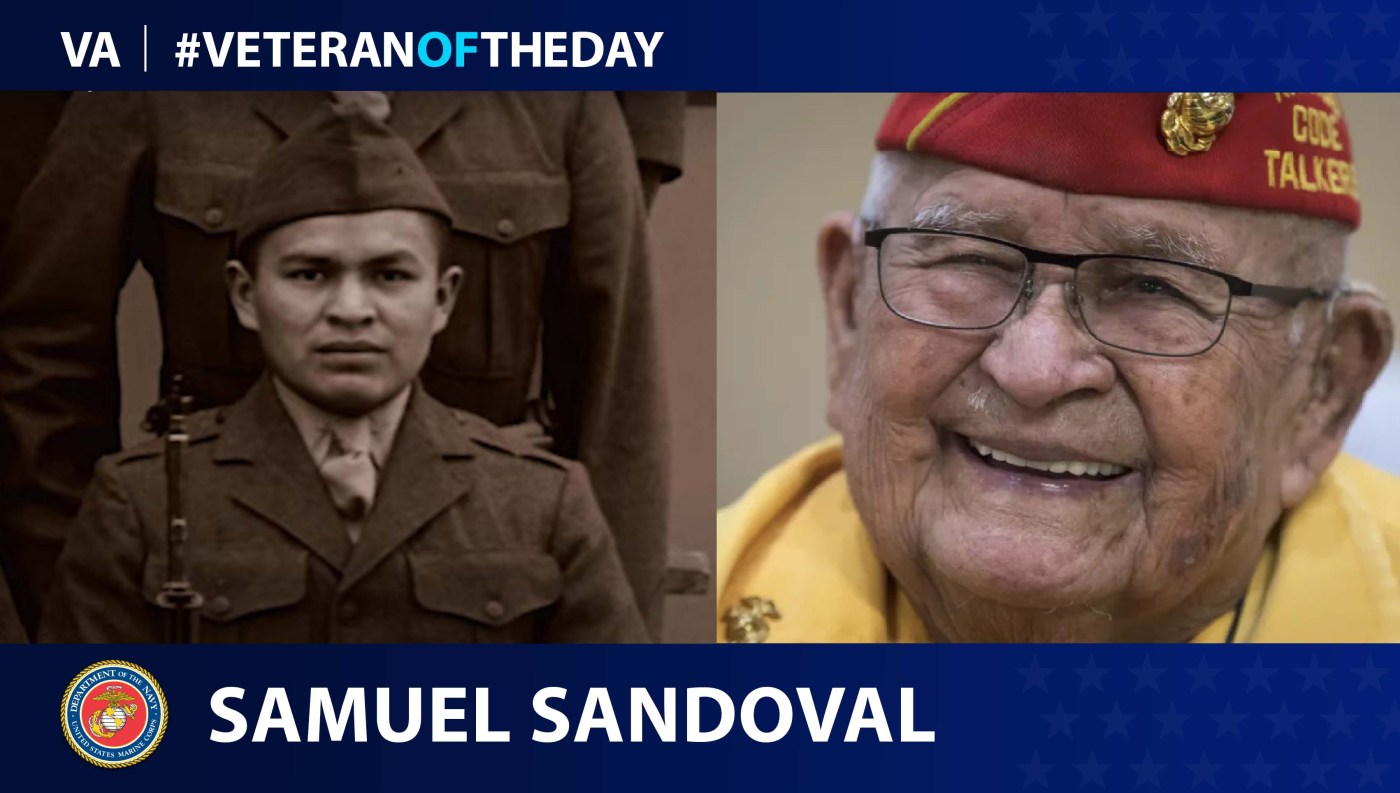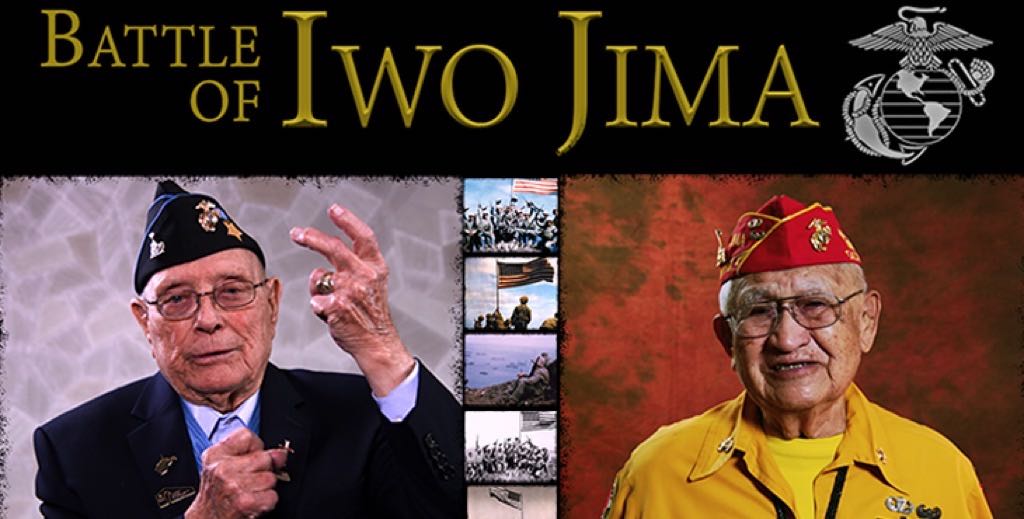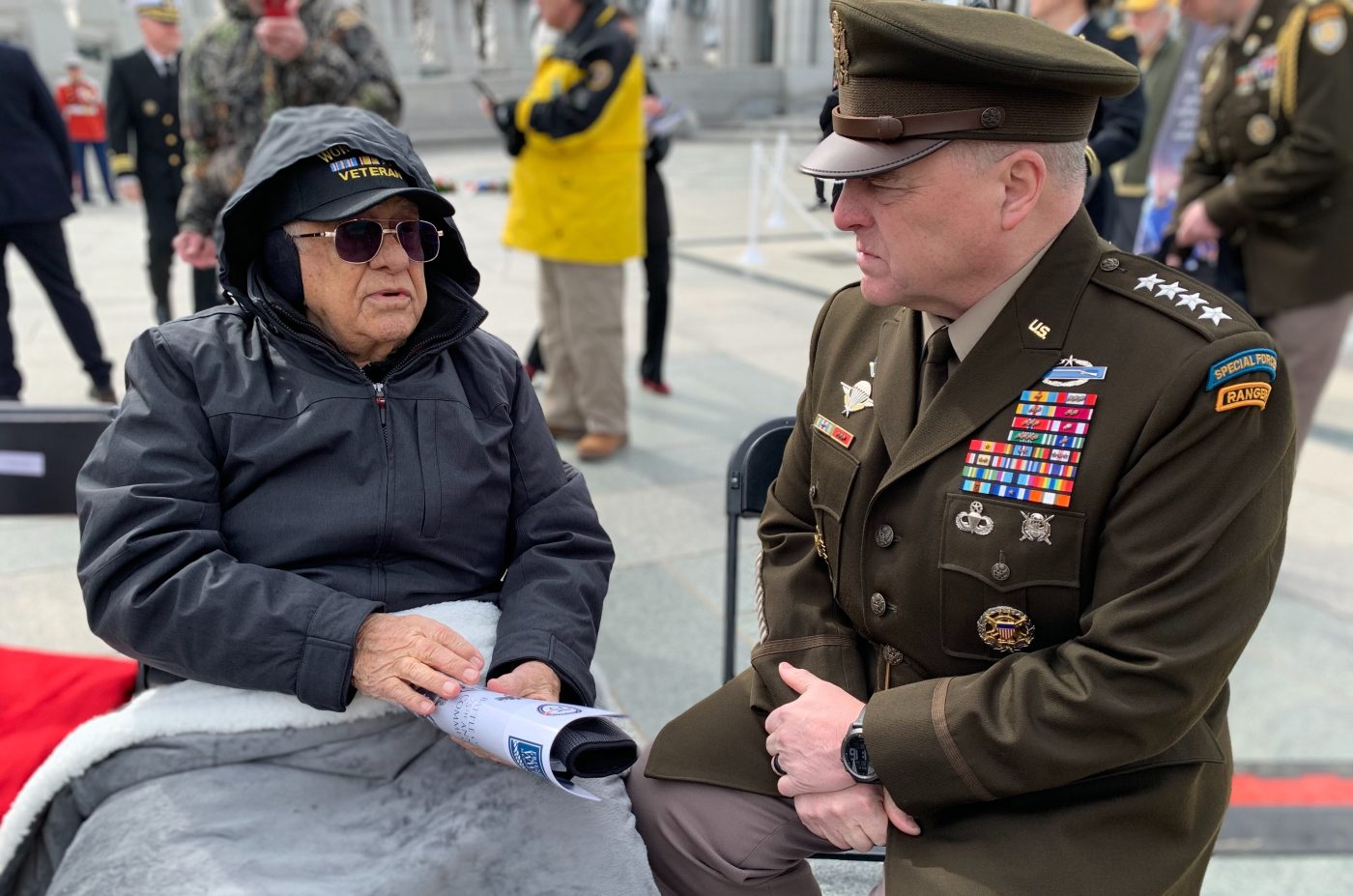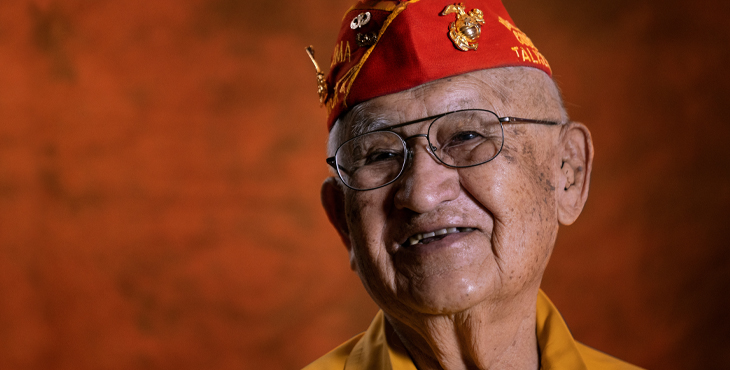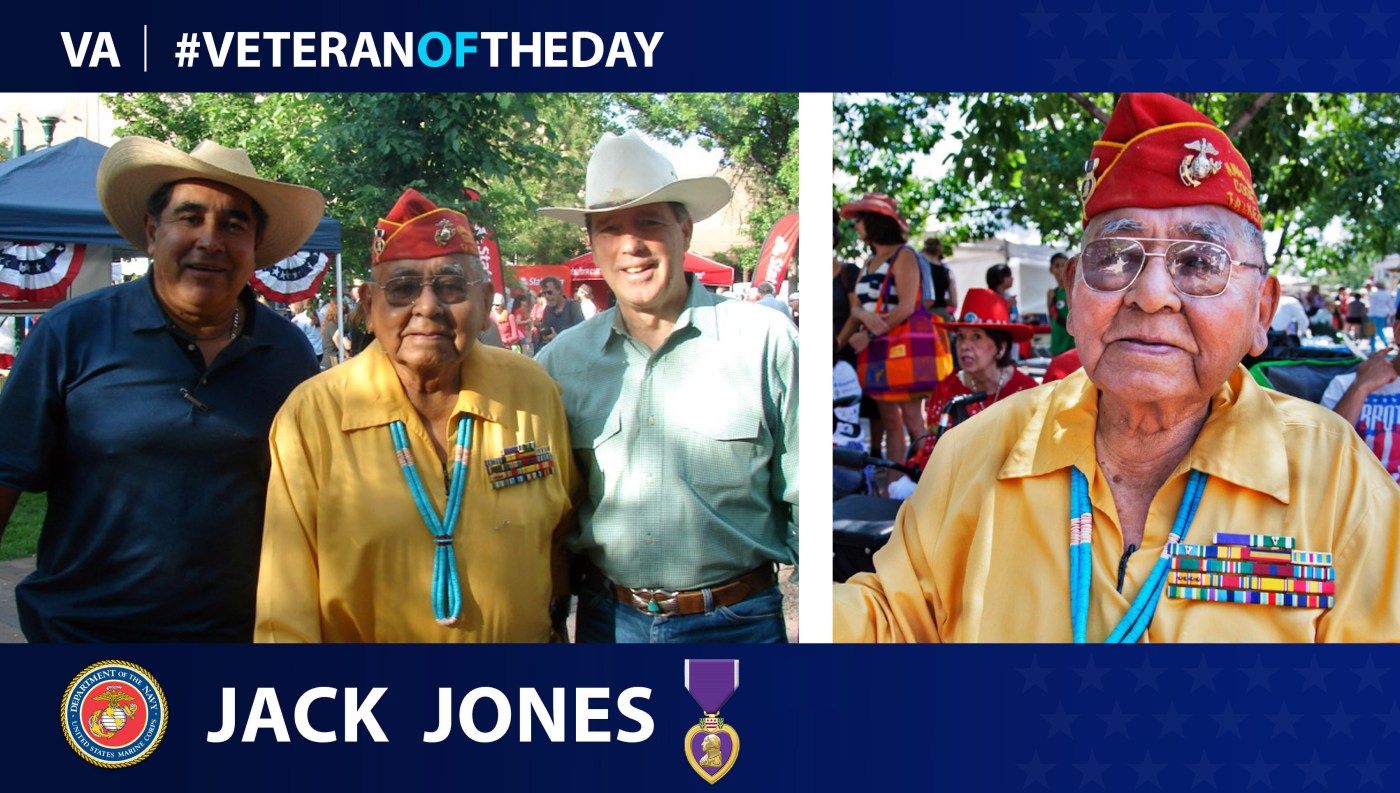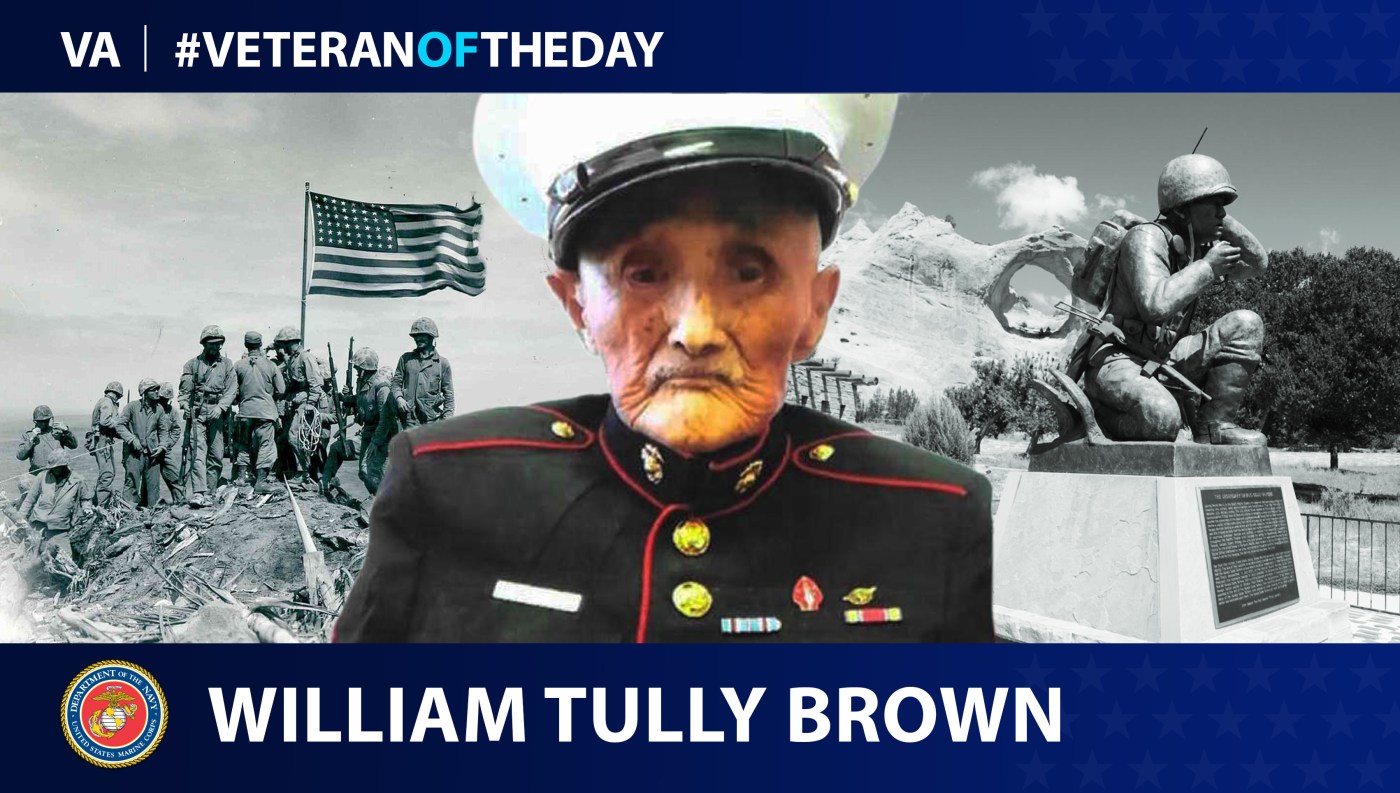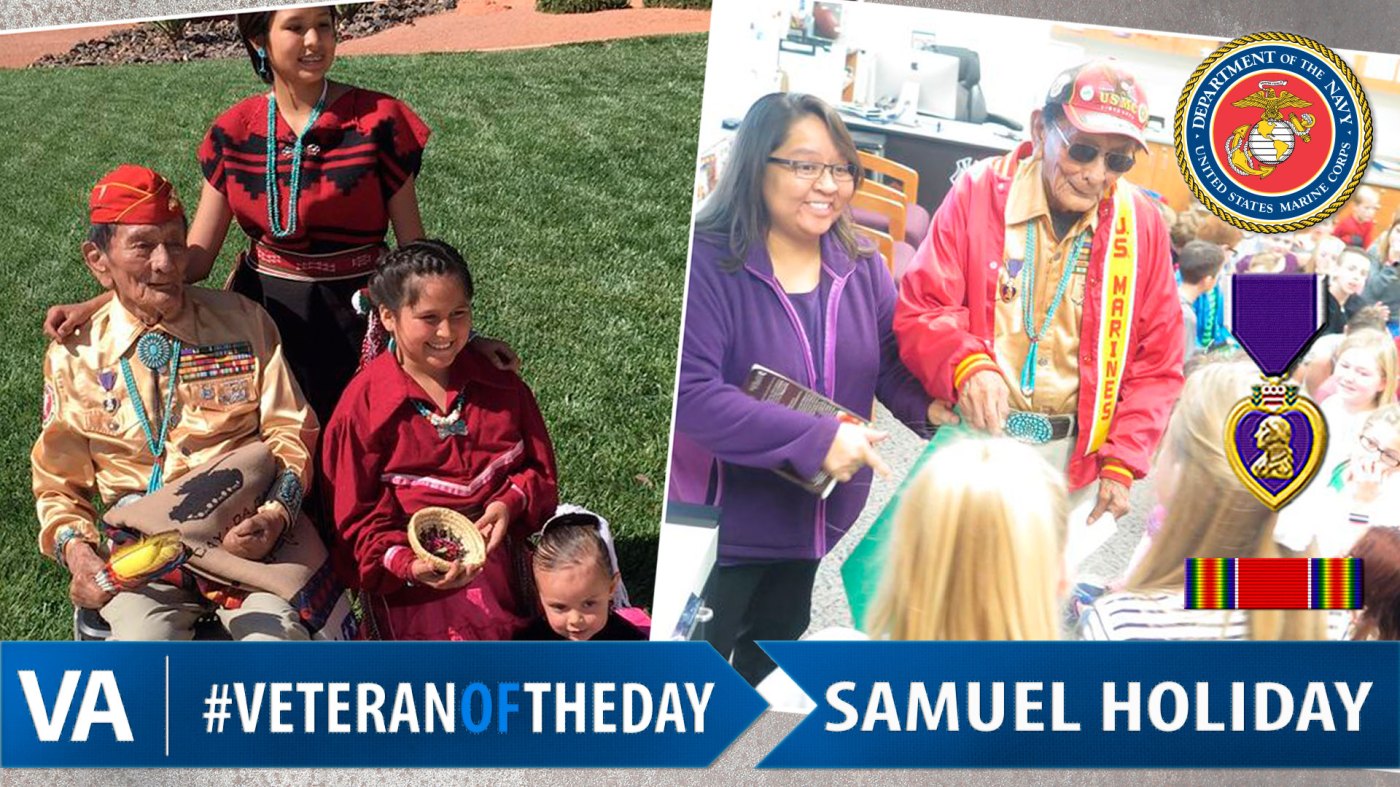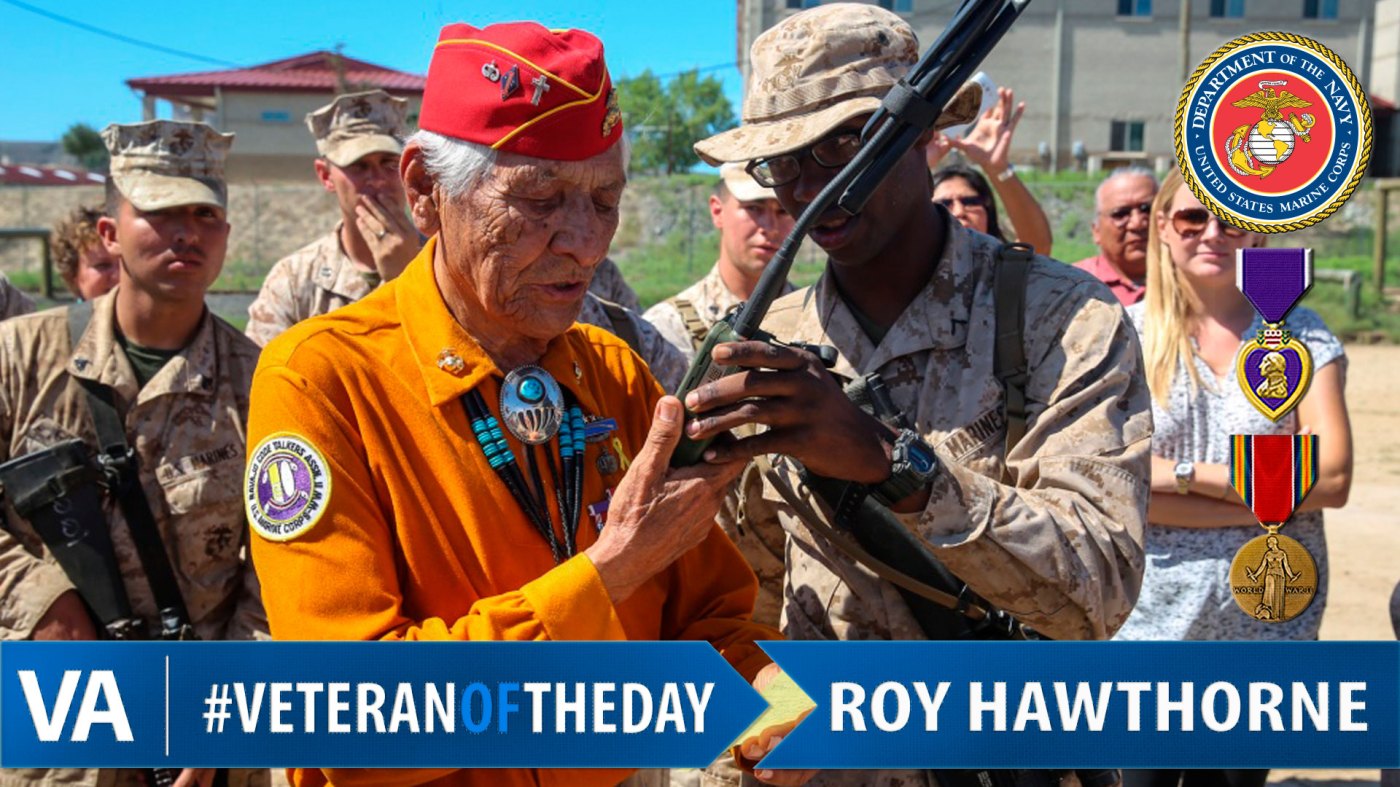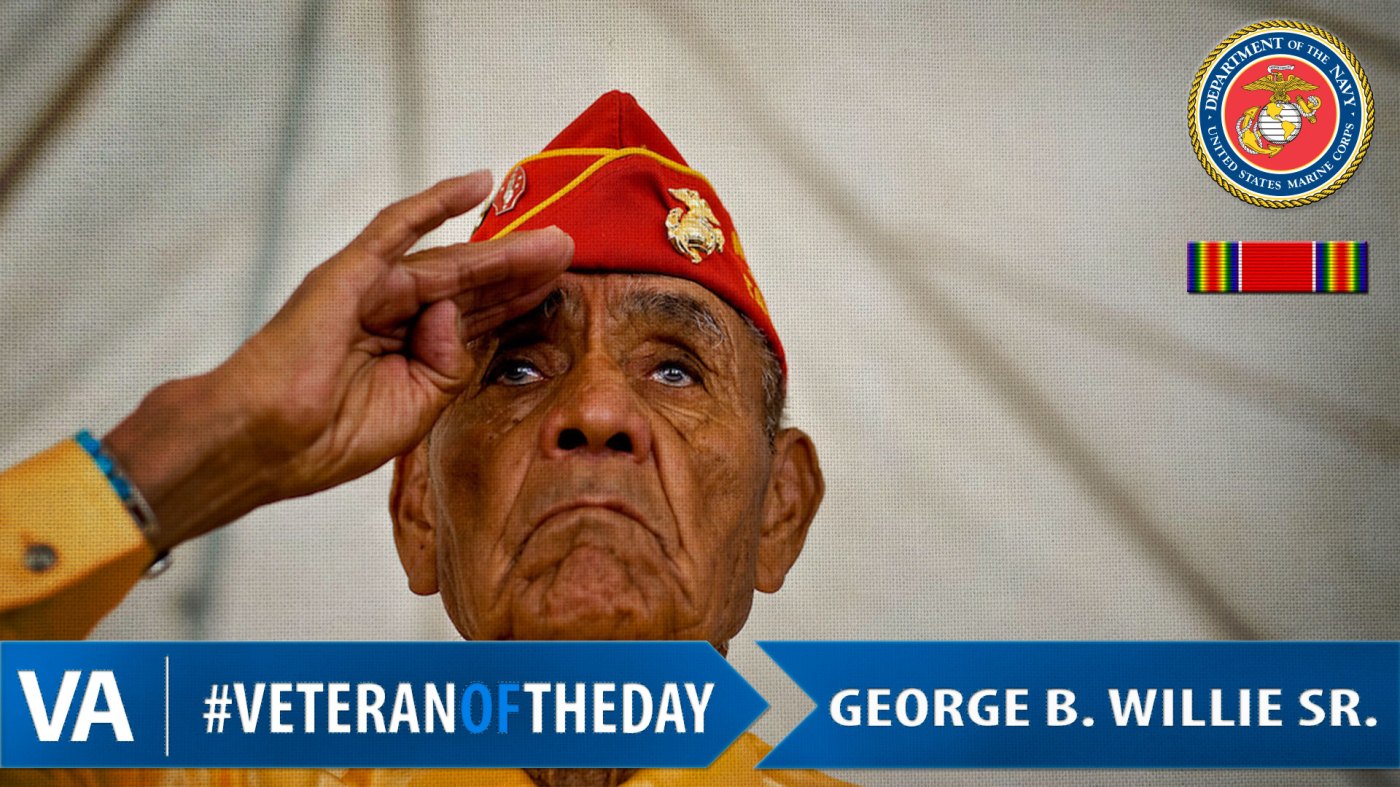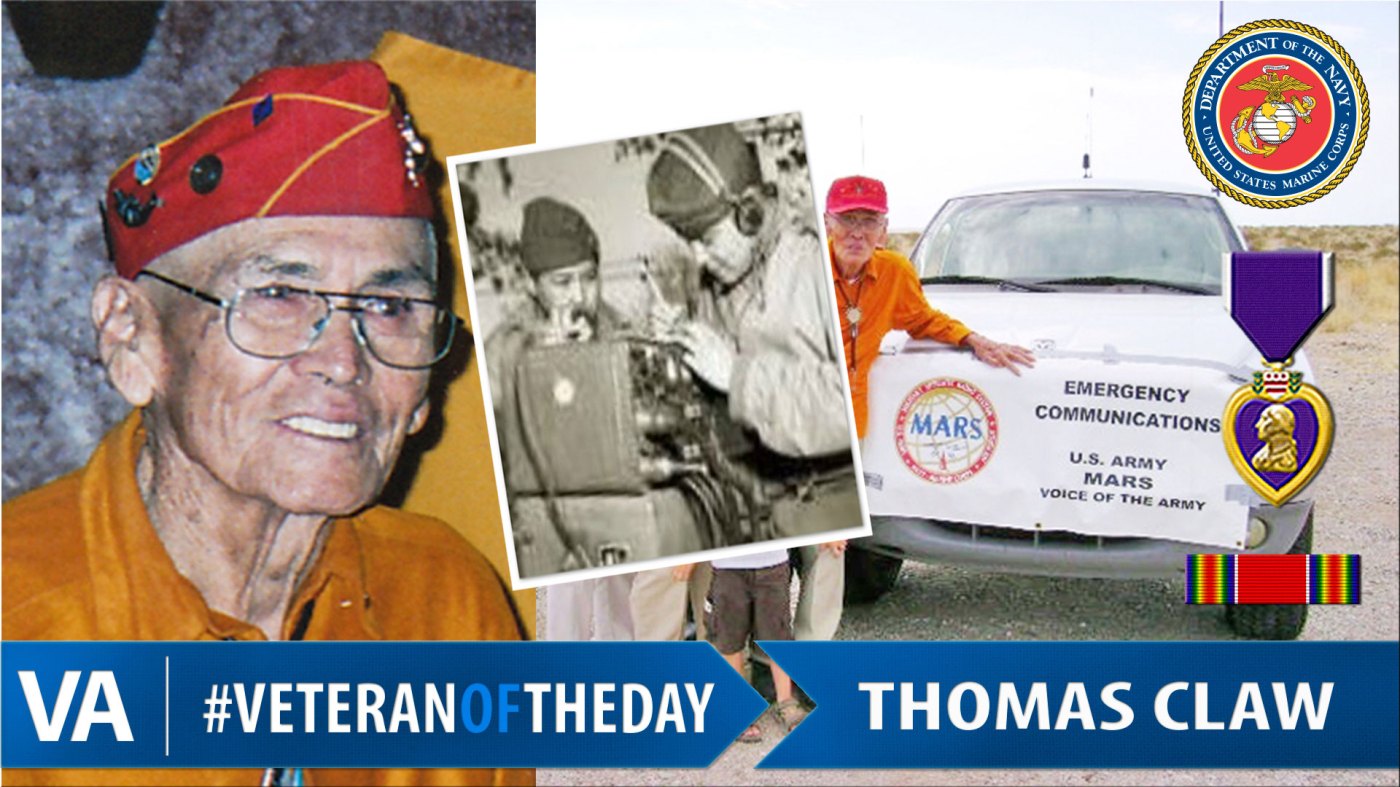On Code Talker’s Day, today’s #VeteranOfTheDay is Marine Corps Veteran Samuel Sandoval, a Navajo who fought during World War II.
On Feb. 23, 1945, five days after the initial assault on the island of Iwo Jima, Marines took control of the high ground and planted a flag atop Mt. Suribachi. Medal of Honor recipient Hershel “Woody” Williams and Navajo Code Talker Thomas H. Begay recall what it was like to see the Stars and Stripes fly high over the island.
The Friends of the National World War II Memorial honored Veterans from the Battle of Iwo Jima during a 75th anniversary commemoration Feb. 19.
On National Navajo Code Talker Day, we celebrate the tenacity and remember the courage of the code talkers during World War II.
On National Navajo Code Talkers Day, today’s #VeteranOfTheDay is Marine Veteran Jack Jones, who served as a Code Talker during World War II.
He was a hero among many in the Navajo Nation who utilized his special skills, unique talents and native language to help win the war against the Japanese during World War II.
Samuel Tom Holiday went on to join the group of Navajo Code Talkers who used a communication code enemies could not decipher.
Roy Hawthorne enlisted in the Marines when he was 17. He served as a Navajo Code Talker with 1st Marine Division in the Pacific Theatre during World War II.
Alfred Newman grew up in New Mexico and enlisted with the Marine Corps in 1943. He was one of over 400 Navajos who enlisted during World War II.
George enlisted with the U.S. Marine Corps as a 17-year-old in 1943. Like many of his Navajo Code Talker comrades he lied to recruiters, claiming he was 20-years-old, while attending a school at Fort Wingate.
Thomas Claw enlisted in the Marines at the age of 21. He completed basic training in San Diego, and was assigned the secret position of Navajo Code Talker.

